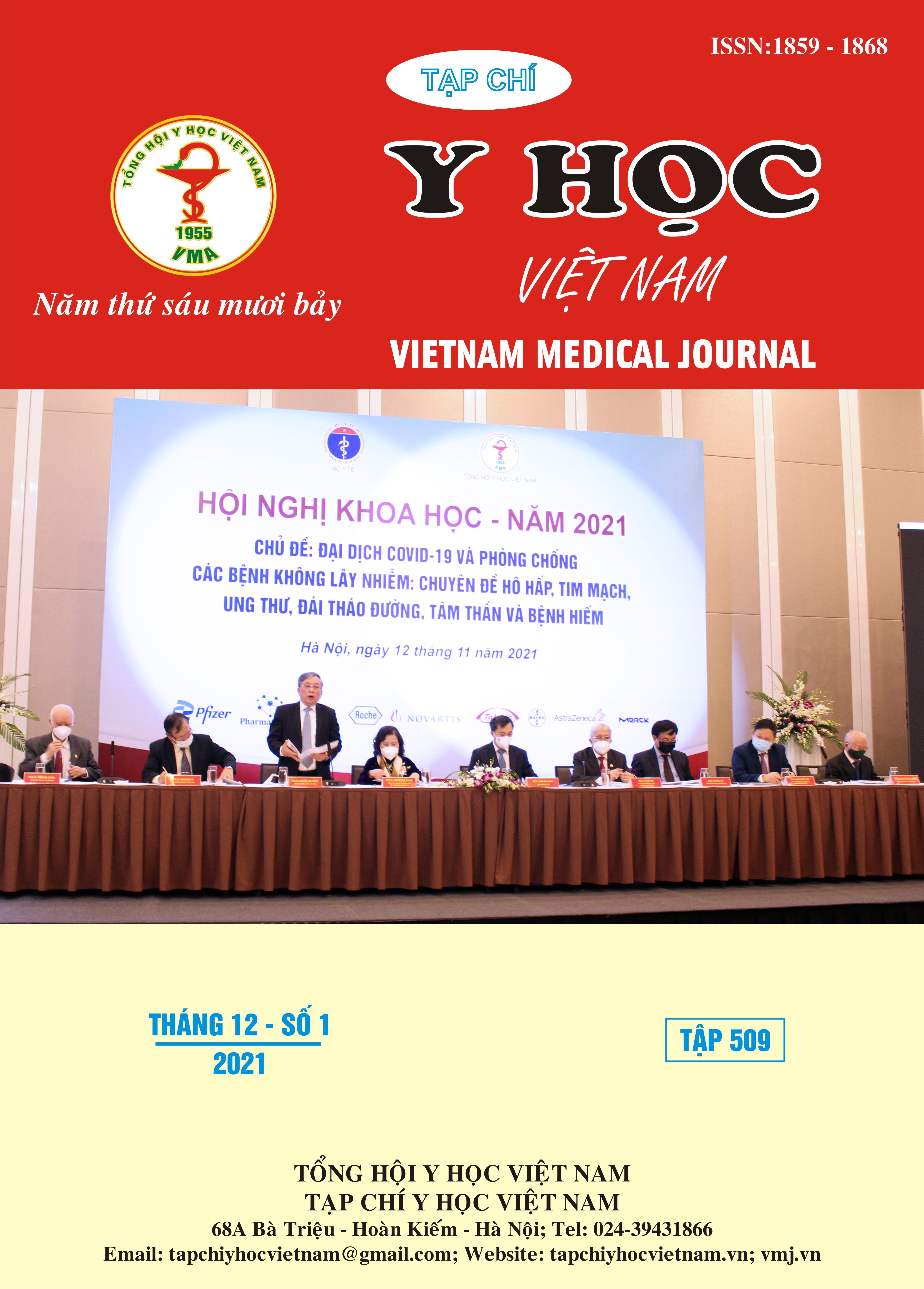CLINICAL AND LABORATORY CHARACTERISTICS OF SYSTEMIC LUPUS ERYTHEMATOSUSPATIENTS WITH POSITIVE ANTI-SMITH ANTIBODY
Main Article Content
Abstract
Systemic lupus erythematosus (SLE) is the most common systemic autoimmune disease that predominantly affects women of reproductiveage. The hallmark of SLE is the excessive production of pathogenic antibodies recognizing self-antigens and the formation of antigen-antibody complexes that trigger the immune response to cause multiple organ injuries. Anti-Sm antibodies are directed against seven snRNPs proteins. The specificity of anti-Sm antibodies for classification of SLE reached 90% in a previous study. Objectives: This study describes the clinical and laboratory characteristics of patients with systemic lupus erythematosus with anti-Smithantibody positive. Methods: Cross-sectional descriptive study on 118 patients diagnosed with systemic lupus erythematosus according to SLICC 2012 criteriawho were treated at the center of Allergology and Clinical Immunology, Bach Mai hospital from July 2020 to September 2021. Results: 51.7% of patients had positive anti-Sm antibodies; concentrated mainly in the childbearing age; female/male ratio was 9.7:1; mean age was 31.53 ±11,786 years old. Positive anti-Sm antibodies were associated with decreased complement C4 (p<0.001); not associated with acute skin rash (p=0.057), mucosal ulceration (p=0.103), arthritis (p=0.374), pericardial effusion (p=0.243), pleural effusion (p=0.426), arthritis (p= 0,374), kidney damage at the level of glomerulonephritis or nephrotic syndrome (p=0.579), leukopenia (p=0.582), thrombocytopenia (p=0.347), C3 deficiency (r=0.347; p=0.078) and positive anti-dsDNA double-stranded antibody (p=0.187). (r=0.076; p=0.207). The mean of SLEDAI score in the two groups with or without anti-Sm (13.39± 5.499 and 12.95 ± 6.659, respectively) had no difference with p=0.691. Conclusion: There was an association between anti-Sm antibody positive with decreased complement concentration and Raynaud phenomenon and no correlation between anti-Sm antibody and SLEDAI score and some organ damage in patients with SLE.
Article Details
Keywords
Systemic lupus erythematosus, Anti-Smith antibodies, Clinical manifestations, Disease damage, SLEDAI
References
2. J. M. Gill, A. M. Quisel, P. V. Rocca, D. T. Walters, “Diagnosis of systemic lupus erythematosus”, Am. Fam. Physician, 68(11), 2003, tr 2179–2186.
3. G. Yaniv et al., “A volcanic explosion of autoantibodies in systemic lupus erythematosus: a diversity of 180 different antibodies found in SLE patients”, Autoimmun. Rev., 14(1),2015, tr 75–79.
4. M. Arroyo-Ávila et al., “Clinical associations of anti-Smith antibodies in PROFILE: a multi-ethnic lupus cohort”, Clin. Rheumatol., 34(7)7,2015, tr 1217–1223.
5. Nguyễn Văn Toàn, “Áp dụng thang điểm SLEDAI trong tiên lượng bệnh nhân lupus ban đỏ hệ thống tại khoa Cấp cứu bệnh viện Bạch Mai”, Luận Văn Thạc sĩ Y Học, trường Đại học Y Hà Nội, 2011.
6. Đặng Thu Hương, Nguyễn Tất Thắng, “Tỉ lệ kháng thể kháng nucleosome trong bệnh lupus ban đỏ hệ thống-Mối tương quan giữa kháng thể kháng nucleosome với ANA, anti-dsDNA và độ hoạt động của bệnh”, Tạp chí Y Học TP.Hồ Chí Minh, Tạp chí Y Học TP.Hồ Chí Minh,2013, tr 294–300.
7. Nguyễn Hữu Trường, “Nghiên cứu mối tương quan giữa mức độ hoạt động bệnh với một số tự kháng thể trong lupus ban đỏ hệ thống”,Luận án Tiến sĩ Y Học, trường Đại học Y Hà Nội, 2017.
8. Lê Hữu Doanh, Cấn Huyền Hân, “Mối liên quan giữa kháng thể kháng Smith với mức độ nặng của bệnh lupus ban đỏ hệ thống”, TCNCYH 98,2015, tr 31–36.


